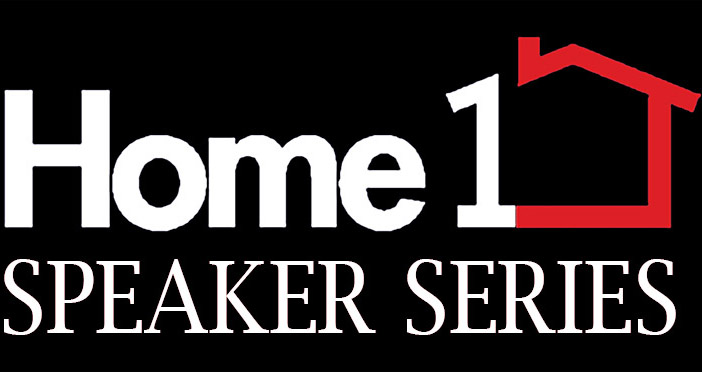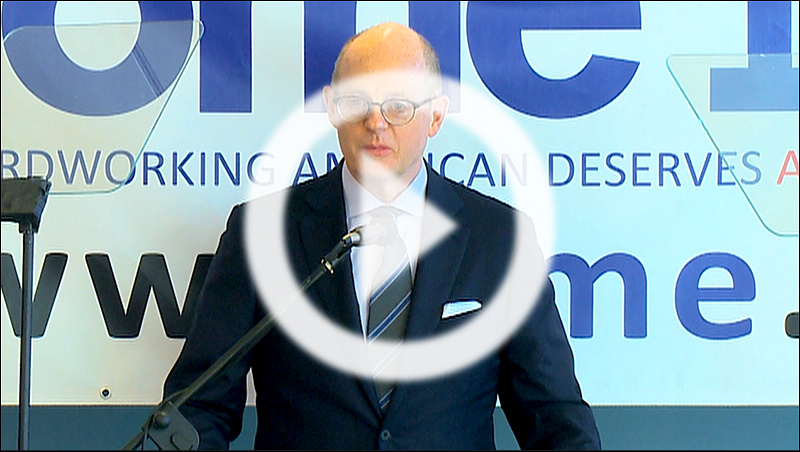
INTRODUCTION OF STEPHEN WHYTE BY TIM FOURNIER, CEO OF CONIFER REALTY
 Stephen Whyte is the founder and managing director of Vitus, a national leader in preserving and enhancing affordable housing.
Stephen Whyte is the founder and managing director of Vitus, a national leader in preserving and enhancing affordable housing.
When establishing Vitus, his mission was to both protect and renew existing affordable housing and create communities of opportunity for seniors and working families.
By focusing on markets with the greatest need and using holistic renovation practices, his company has improved the lives of more than 25,000 people in 22 states.
Vitus acquires, protects and renovates affordable housing, creating vibrant, livable communities through thoughtful restoration based on Active Design principles.
Its approach gives residents access to healthier lifestyles by creating spaces for physical activity and community gardens and offering a variety of health, wellness, and educational programs.
Stephen has decades of experience in this space and, along with passion, has deep expertise in all of facets development and financing.
He is also committed to sustainable building practices, alternative energy strategies and the use of technology to reduce environmental impact.
I’m very pleased to introduce Stephen Whyte.
WE HAVE A CRITICAL SHORTAGE OF AFFORDABLE HOUSING
BUT WE CAN’T AFFORD TO LOSE WHAT LITTLE WE HAVE NOW
PRESENTED AT HOME1 LAUNCH EVENT
NEW YORK, NY • FEBRUARY 27, 2018
By Stephen Whyte, Managing Director and Founder of Vitus
I grew up in Longview, Washington in the 1960s and 70s – a few hours south of Seattle and just up the Columbia River from Portland, Oregon.
Like thousands of other towns, Longview was a working-class community. It was founded as a company town in 1923 for the huge lumber mills which lined the river – which at one point included the largest lumber mill in the world.
Let’s roll back to what I just said – where Longview was a “working class community”. That is our current perspective, but that was not our perspective back then. Even though almost all of the dads worked at the mills and for the timber industry, including my own dad, we did not think of ourselves as working class, versus middle class, or really any class at all. We all had comfortable 1,500 square foot three-bedroom homes, good schools, caring family physicians, and a beautiful library.
In a community like Longview, everything lined up – wages and salaries, distance to schools and services, cost of education – and cost of housing. Back then we never wondered whether housing was “affordable”, we just called it housing. For most families, these jobs paid enough to support a family, to buy or rent a house, send kids to school, put food on the table. There was stability.
To put it mildly, times have changed.
In my 25 years in affordable housing development, I have seen the affordable housing issue grow from a conversation into a full-blown national crisis.
Exploding market-rate rental prices, flat wages and increased costs of living have created conditions that are breaking the backs of working Americans.
Rising rents have pushed many Americans into a precarious balance where one medical situation, major car repair or late paycheck is enough to tip them into a cycle of homelessness.
For the first time in America, tens of thousands of people with full-time jobs are living in homeless shelters.
Our industry has a responsibility to lead the charge and tackle the housing crisis. And what a crisis it is.
Today, there is nowhere in America where a full-time minimum wage job is enough to afford a one-bedroom apartment.
If you work full-time – that’s 40 hours a week — at minimum wage, there is nowhere in America where can you afford a one-bedroom apartment.
In fact – if you earn less than $17.14 per hour, there is nowhere in America where you can afford to rent a one-bedroom apartment.
In a country where one-third of people are renters, half of them pay more than they can afford – and 53 million pay half or more of their income on[CE2] rent. We call that severe rent burden – when rent exceeds 50% of a household’s income. 53 million.
Okay – that’s a lot of numbers – but for me, they all add up to one thing: every eleven seconds in the United States of America, one family is kicked out of their homes because they can’t afford their rent.
That’s not okay with me, and I hope it’s not okay with you, either.
And these aren’t just folks working fast-food jobs – they represent workers in some of the most essential jobs to keep our communities healthy: Our paramedics. The technician at our local pharmacy. The teller at our neighborhood bank. Our children’s kindergarten teachers. Our toddlers’ day-care workers.
Let’s go back to Longview, Washington in the 1960s and 70s. Not literally (let’s leave harvest gold and avocado green in the past) — but it is important to talk about the fact that today’s economic challenges for families and seniors are drastically different than the economic environment back then.
In addition to the lack of affordable housing options – there’s the fact that 7 out of 10 Americans have less than $1,000 in the bank. That’s why a broken timing belt can put a family on the street.
Lack of affordable housing also contributes to long commutes – millions of people are forced to commute more than an hour to and from work each way, every day.
And on top of these day to day struggles, there is a long-term impact on upward mobility. That family without strong savings is then looking at mountains of debt to send their kids to college – the costs of which have skyrocketed over the past 20 years.
These stats will only get bleaker as our nation’s growing need for affordable housing continues to outpace our ability to build it.
So – while I can’t do much about the price of college, I can put the power of Vitus’ support, expertise and experience behind efforts to alleviate America’s desperate shortage of affordable housing.
Today, Vitus is proud to support Home1 – a campaign launching today to shine a spotlight America’s housing crisis and bring together government, business and community leaders to create long-term solutions.
These solutions are not complex or unattainable.
As much as we need to create more affordable housing, it’s also absolutely vital that we preserve the supply of existing housing that, without careful management and renovation, will become market-rate housing that is out of reach for the people that need it most.
More than a million affordable units under legacy programs are nearing the end of their lifespans – and an additional 75,000 affordable units per year become eligible to be sold as market rate housing. We must take action to keep every single one of these units affordable.
The good news is, preserving and renovating existing housing is a business model that works.
For the past 25 years, Vitus has worked with private investors, communities and government agencies to sustain affordable housing properties and keep them from becoming unaffordable market-rate developments.
We convert existing buildings into designated low-income housing and also turn aging infrastructure into affordable, modern homes. Our communities include features like community gardens and playgrounds as well as offer health and wellness amenities like exercise and art classes, after-school programs and more.
We have preserved more than 10,000 units across 22 states for the people that need them most – seniors who need a place to stay active and age with dignity. Working families that need a safe, healthy place to raise their children. Teachers. Day-care workers. Bank tellers.
I’m proud of our work, but there is still much to do. And, as Home1 demonstrates, it will take much more than one affordable housing developer to overcome our nation’s affordability crisis. It will take a coordinated movement to create the change our country needs.
So today I urge you to join us.
Along with Home1 we are advocating for several things:
Housing policies that encourage the creation of affordable housing in “centers of economic activity”– that is, policies that help people to live in or near the communities where they work. 2-hour commutes are not sustainable for any family.
We’re pushing for local zoning laws that require setting aside a certain number of apartments in new buildings for specific, essential occupations – like teachers, fire fighters and childcare workers.
We also want to address land-use restrictions to make it easier to create new affordable rental homes in all types of areas that need them, including rural areas.
And we’re committed to bringing the development community into the Home1 movement, to help take on this issue and find ways to balance real estate interests with the societal costs created by a lack of affordable housing.
Solving our nation’s housing crisis will be difficult, but in many ways is not complicated. We need more of what is working now. That means more affordable housing, for more people, in more places – as soon as possible.
One of the most direct and efficient ways to do this is to protect the affordable housing we already have, and ensure it does not become market-rate housing.
We need to renew aging properties through holistic renovation projects that not only improve the quality of housing, but bring real benefits to residents and the communities they live in.
We need to do whatever we can as an industry, and as community members, to ensure that every 11 seconds in America, a family doesn’t lose their home to unaffordability. We can do better, and we will. Join us and Home1 to take on this challenge.
Thank you.


